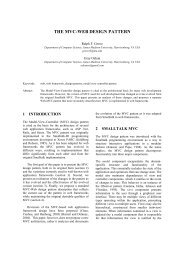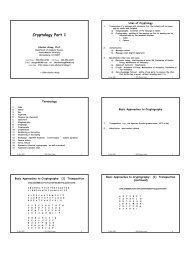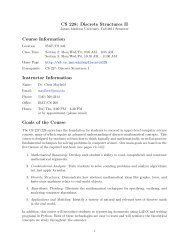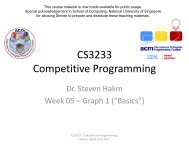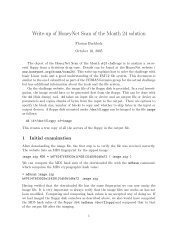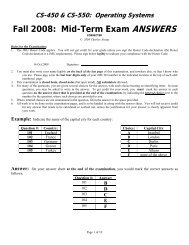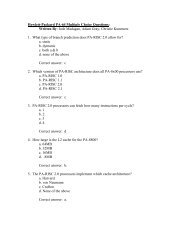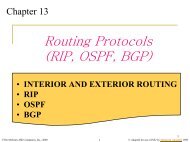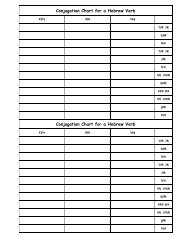Activity 13-1: UML State Diagrams
Activity 13-1: UML State Diagrams
Activity 13-1: UML State Diagrams
You also want an ePaper? Increase the reach of your titles
YUMPU automatically turns print PDFs into web optimized ePapers that Google loves.
<strong>Activity</strong> <strong>13</strong>-1: <strong>UML</strong> <strong>State</strong> <strong>Diagrams</strong>Why?<strong>UML</strong> state diagrams are an important modeling tool for designing complex behaviorof software components. They can be used in mid-level design to describe thebehavior of components or of individual objects.Learning Objectives◾ Understand the syntax and semantics of <strong>UML</strong> state diagrams◾ Make interaction models using <strong>UML</strong> state diagramsSuccess Criteria◾ Be able to distinguish correct from incorrect <strong>UML</strong> state diagrams◾ Be able to interpret and explain the meaning of <strong>UML</strong> state diagrams◾ Be able to draw <strong>UML</strong> state diagrams that model component and object behaviorResourcesPlanISED section <strong>13</strong>.11. Review ISED section <strong>13</strong>.1 individually.2. Answer the Key Questions individually, and then evaluate the answers as a team.3. Do the Exercises as a team, and check your answers with the instructor.4. Do the Problems and Assessment as a team.5. Turn in the Problems and Assessment as a team deliverable.6. Do the Homework individually.Key Questions1. What differentiates one state of a software component from another?2. Is a finite state machine with a final state guaranteed to halt?3. Is a transition required to have a non-empty event signature?4. What is the source of a transition that begins at the border of a composite state?5. When a composite state and a simple state within it both have exit actions and theyare exited simultaneously, which exit action is executed first?© 2008 Ralph Grove and Chris Fox 1 v2.0
Exercises1. Complete exercise <strong>13</strong>.1 from the textbook.2. The following <strong>UML</strong> state diagram models the behavior of a video tape player.Identify at least five errors in the diagram.Problems (Deliverable)1. According to ISED Figure <strong>13</strong>-1-1, what state will the Tape Recorder be in if it is inits stopped state and the series of events occurs?2. What modification is necessary to ISED Figure <strong>13</strong>-1-4 to make the vendingmachine refund the coins entered if a “Refund” button is pressed?3. According to the state diagram below, what series of actions will be generated ifthe machine starts up and then processes the transition sequence ?© 2008 Ralph Grove and Chris Fox 2 v2.0
4. Create a state diagram to model the operation of a simple cell phone. The cellphone has an on/off switch. It has a numeric keypad that produces a keypad pressevent with a digit as its argument. The phone has a three-way switch that is set toringing, vibrating, or both; it determines the action of the phone when a call comesin. The phone also has an action button that (a) initiates a call when seven digitshave been entered, (b) answers a call when the phone is ringing or vibrating, and(c) terminates a call (hangs up) if a call is in progress. If the action button ispressed when fewer than seven digits have been entered and the phone is notringing, the digits are erased (this is how dialing mistakes are corrected). Finally,the phone has a display that shows the digits that have been pressed so far, if any.Use at least one composite state in your model.Assessment (Deliverable)1. What part of this activity helped you most to achieve the learning objectives?2. How could the instructor modify this activity to improve learning?© 2008 Ralph Grove and Chris Fox 3 v2.0



